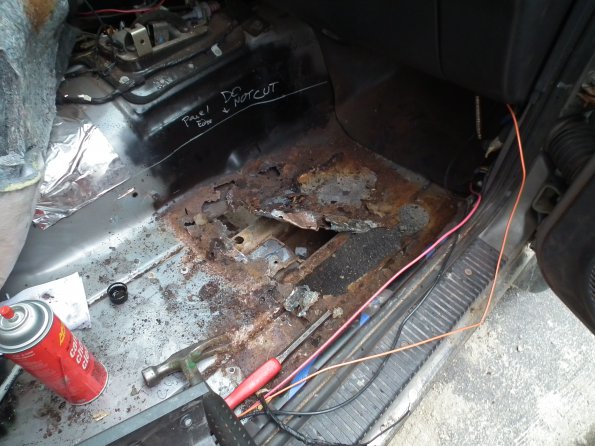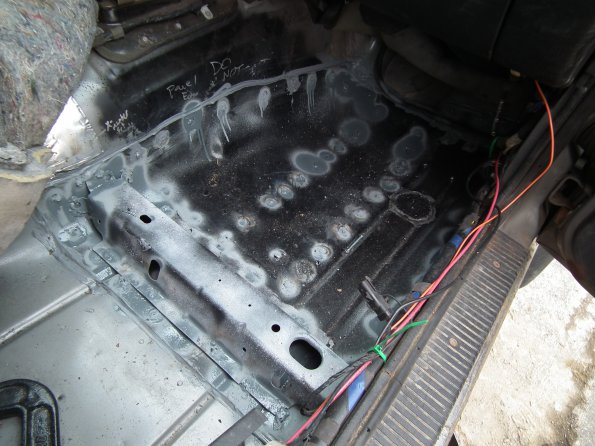blistovmhz
NAXJA Forum User
- Location
- Vancouver, BC
I finally got around to wiring up my under-body lights, and while pulling the carpet (driver side) discovered that the weak spot in my floor was actually the stock plug, and that everything 3-4" out from it was rotted right out. I figure it'd be silly to have my soggy carpet out to dry and not fix the floors while I'm in there.
This will be my first attempt at "structural" body work. As much as I dug the Flinstones, I really don't wanna experience it.
So, the plan is to strip the interior, rip out all the carpet, chop out anything that doesn't look nicely painted, and spot weld in some new sheet, and probably replace the carpet with some brand new Van liners (roomie has hundreds of them just taking up space at work. THey're thick, durable, apparently pretty pliable with some heat, rubber topped, and free).
On the specifics, I'd plan the following, and hoping someone can point out where I may be missing something:
* Cut out the bad sections, clean them up real good, spray with weld-through primer, and spot weld my new floor material in.
* Fill the seams with seam sealer.
* Primer the hell out of the underside, followed by possibly more seam sealer and a bunch of paint.
* Cut the Van liner into a few sections to lay on top. One section over the tunnel, and probably on section per side for the passengers. This way if I need to get under the flooring again, I won't have to strip the entire interior.
Given I've got box sliders I could tie into, I may just remove the entire floor all the way to the wall, and weld floor right into the sliders. Haven't decided yet. If I was to start this build all over again, I'd probably cut out the floors before doing sliders, so it could all be tied together real nice.
Thoughts/suggestions? I'm hoping to get started on this tonight, and be done Tuesday/Wednesday.
This will be my first attempt at "structural" body work. As much as I dug the Flinstones, I really don't wanna experience it.
So, the plan is to strip the interior, rip out all the carpet, chop out anything that doesn't look nicely painted, and spot weld in some new sheet, and probably replace the carpet with some brand new Van liners (roomie has hundreds of them just taking up space at work. THey're thick, durable, apparently pretty pliable with some heat, rubber topped, and free).
On the specifics, I'd plan the following, and hoping someone can point out where I may be missing something:
* Cut out the bad sections, clean them up real good, spray with weld-through primer, and spot weld my new floor material in.
* Fill the seams with seam sealer.
* Primer the hell out of the underside, followed by possibly more seam sealer and a bunch of paint.
* Cut the Van liner into a few sections to lay on top. One section over the tunnel, and probably on section per side for the passengers. This way if I need to get under the flooring again, I won't have to strip the entire interior.
Given I've got box sliders I could tie into, I may just remove the entire floor all the way to the wall, and weld floor right into the sliders. Haven't decided yet. If I was to start this build all over again, I'd probably cut out the floors before doing sliders, so it could all be tied together real nice.
Thoughts/suggestions? I'm hoping to get started on this tonight, and be done Tuesday/Wednesday.



























